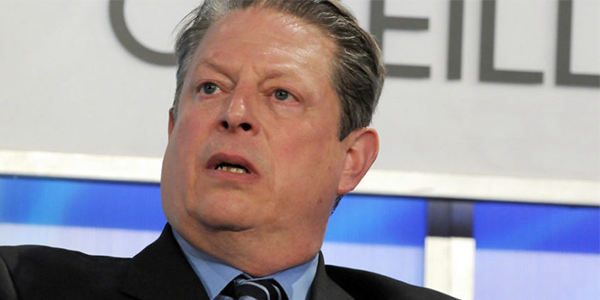
The Astonishing Failures Of Al Gore’s Arctic Prophecies
In his 2007 Nobel Peace Prize acceptance speech, Al Gore claimed that there is “a 75 percent chance the entire polar ice cap will melt in summer within the next five to seven years.”
Well, eleven years have gone by, and Arctic ice is doing fine.
Why do politicians like Gore make blatantly false claims?
The Arctic ice sheet has been the heart of climate-change debate. So much so, both climate-change alarmists and climate-change skeptics have often erred by relying exclusively on the Arctic for their assessment of climate change.
Yes, the Arctic is an important indicator of how global climate is behaving. But it is only a piece of a bigger and much more complex climate puzzle. Climate is dependent on numerous factors, all having varied impact and response from the earth’s climatic system.
Gore’s claims were proven wrong the same year he made them: Arctic ice grew to its highest level in two years. In 2014, the actual doomsday-year prophesized by Al Gore, his claims were again proved to be false.
Ten years later, his claims are still wrong. Indeed, every year data on Arctic ice mass have shown that Arctic ice is not decreasing at rates Gore or any other climate alarmists claimed.
Last week, Arctic ice volume reached its third-highest level in 16 years, the previous being in 2004 and 2014. A closer inspection of the data of Arctic ice volume over those 16 years suggests no steep decline. Rather it displays a cyclic pattern of change.
The oscillatory cyclic change in Arctic ice volume despite a constant increase in the atmospheric carbon dioxide concentration levels suggest that Arctic ice volume is not directly impacted by carbon dioxide concentration levels in our atmosphere.
If you think 16 years is too short for assessing the melting of Arctic, then you will be astonished to see the long-term trend.
Arctic ice volume is currently at its highest level in the last 11,700 years, except for the Little Ice Age (in the 16th and 17th century), which saw a much higher volume.
All other centuries have had lower Arctic ice volume. This is despite the fact that we are in a warming phase since the 18th century and Arctic ice has continued to melt since the end of Little Ice Age.
But why did Gore make such unrealistic claims at his grandest stage?
First, he is a politician, not a scientist. It doesn’t mean he cannot make valid claims about the state of the Arctic, but it does mean he is prone to err. Second, in his case, he made manipulative claims about the Arctic based on a single probabilistic forecast theory that was disguised as a scientific truth.
It was obvious that Gore exaggerated an existing natural phenomenon (of slight increases in global temperatures) in order to make a hypothesis that would suit and support his narrative of climate alarmism.
Throw in a mix of false numbers about the death of Polar bears and sea water engulfing coastal cities, and you have the perfect recipe for climate alarmism.
The exaggeration of a melting Arctic has the ability, as seen in recent times, to instill fear in the minds of the public. This panic about a collapsing world gives alarmists like Gore the perfect platform to impose restrictive energy policies that curtail the operation of traditional carbon dioxide emitting energy sources like coal and oil—and favor the low-carbon “renewable” technologies in which Gore had large investments, like solar and wind.
So, it looks like Gores agenda is really about a war against the coal and oil industries, which compete with his own, not about saving the Arctic from its imaginary melting.
In his 2007 movie, Gore also predicted the collapse of Polar bear populations in the Arctic. It did not take experts too long to disprove this claim. The Polar bear population has been stable in the Arctic regions, according to numerous research studies done in the region.
In more recent times, Gore has stayed away from his ice-melt and Polar bear depopulation prophecies, for they were old tricks and the test of time has proved them wrong.
As a result, his latest movie, An Inconvenient Sequel: Truth to Power, which premiered in 2017, did not make many claims about the Arctic and Polar bears. But the movie stayed up to its reputation of spreading more false claims about the health of our planet and its ecosystem.
As a skeptic, I’m waiting for Gore’s next prophecy. About Penguins, maybe? Only the prophet knows! Meanwhile, I’m genuinely happy for the Arctic’s health.
This article was originally published on Barbwire.com.












